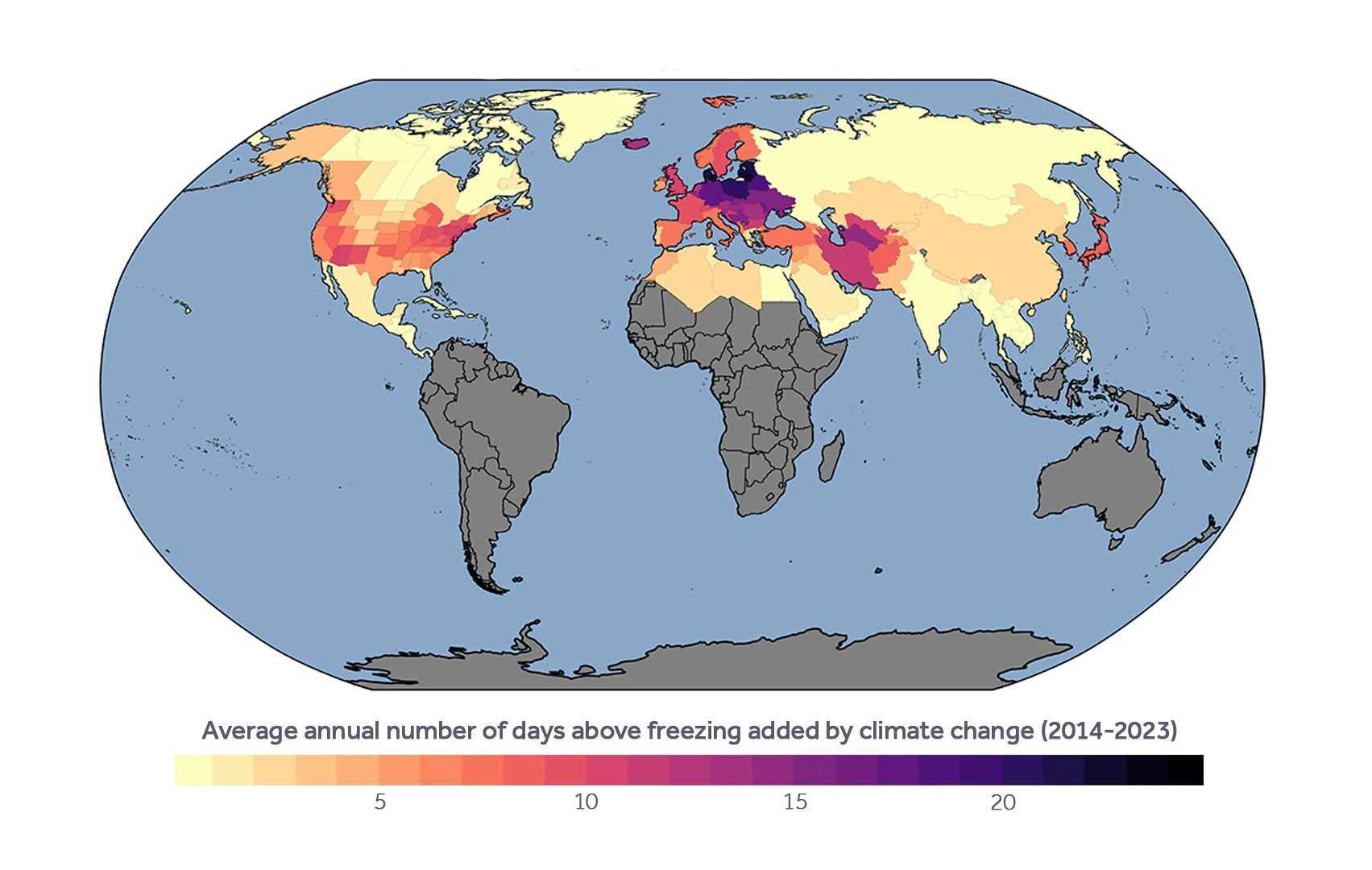Report•December 16, 2024
Lost Winter: Above-freezing days added by climate change
Read the full global report: Lost Winter (2024)
Download the data: National, state/province, and city data for 123 countries and 901 cities

Key Facts
Across the Northern Hemisphere, climate change — due primarily to burning oil, coal, and methane gas — is causing a significant increase in winter days with minimum temperatures above freezing, otherwise called lost winter days.
Analysis of daily minimum temperatures during winter (December, January, February) in 123 countries, using the Climate Shift Index, shows that more than one-third (44) experienced at least one additional week’s worth of days above freezing annually during the past decade (2014-2023) due to human-caused warming.
On average, climate change added more winter days above freezing in European countries compared to nations in other regions.
Around 44% of cities analyzed (393 of 901) experienced at least one additional week’s worth of days above freezing annually due to climate change. Cities throughout Asia and Europe were among those that saw the most additional days above freezing due to global warming.
In the United States, 28 states and around 63% (39 out of 62) of cities analyzed experienced at least a week’s worth of lost winter days each year due to climate change.
Data
Download data (.xlsx) for 123 countries, 901 cities -- including U.S. states and 62 cities
Report
Download global report (.pdf)
Download Canada report (.pdf)
Download Denmark report (.pdf)
Download France report (.pdf)
Download Germany report (.pdf)
Download Italy report (.pdf)
Download Japan report (.pdf)
Download Norway report (.pdf)
Download Poland Report (.pdf)
Download Spain report (.pdf)
Download U.K. report (.pdf)
Major funding provided by the Bezos Earth Fund